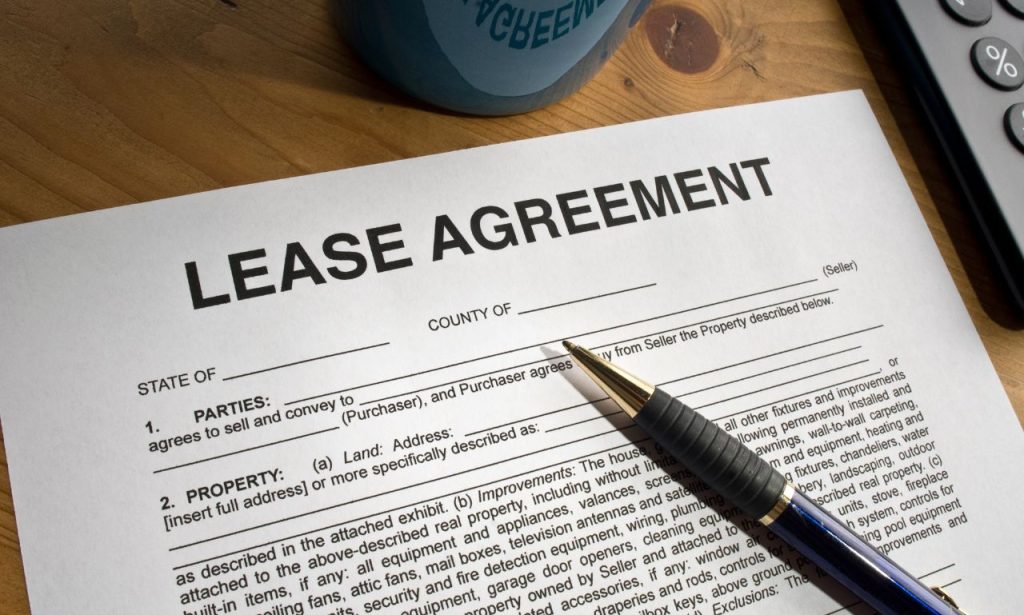Breaking a lease isn’t as simple as packing up and leaving. Many tenants need to exit their rental agreement early—maybe you got a job offer in another state, your family is growing, or your financial situation has changed. Whatever your reason, understanding how to surrender a residential lease properly can save you thousands in potential liability. Let’s break down the most common methods to surrender your residential lease correctly.
Surrender by Mutual Consent
The cleanest way to exit a lease early is through mutual agreement with your landlord. This approach, known as express surrender or surrender by consent, happens when both parties willingly agree to terminate the lease agreement before its natural end date.
Here’s what typically happens: You approach your landlord with your situation and request an early termination. If they agree, you’ll want to get this in writing—usually through a formal surrender agreement. This document should clearly outline the terms, including your move-out date, any financial obligations, and what happens to your security deposit.
Why do landlords sometimes agree to this? Real estate markets change. In hot rental markets, your landlord could benefit from getting a new tenant at a higher rate. I recently helped a client in Seattle negotiate an early release because the landlord realized they could increase the rent by $300 monthly with a new tenant. The key is finding the win-win scenario.
Maintenance to Prevent Waste

When surrendering your lease, you still have obligations regarding the property’s condition. Most lease agreements include clauses requiring tenants to maintain the property and prevent “waste”—legal terminology for damage or deterioration beyond normal wear and tear.
You might think, “Why bother maintaining a place I’m leaving?” The answer is simple: Your security deposit and potential additional liability. I’ve seen tenants lose their security deposit and face further charges because they neglected basic maintenance before surrender.
What does this maintenance involve? At minimum:
- Fix any damage you’ve caused beyond normal wear
- Complete routine maintenance, like replacing HVAC filters
- Clean the unit to a “broom-clean condition.”
- Address any issues that could worsen if left unattended
A client of mine once ignored a small water leak before surrendering their apartment. Three weeks later, they faced a $2,700 bill for water damage that occurred after they left. The landlord argued that the tenant knew about the issue and failed to report it before leaving.
Surrender by Operation of Law
Sometimes, a lease surrender happens automatically through the “operation of law.” This occurs when specific actions by either the landlord or the tenant effectively terminate the lease, even without explicit agreement.
The most common scenario involves the landlord accepting the keys and taking possession of the property. For example, if you return your keys and the landlord accepts them without protest, courts often interpret this as a surrender by operation of law.
Another example happens when a landlord rents the property to someone else after you’ve moved out. This action typically constitutes an acceptance of surrender, as the landlord can’t collect rent from two different tenants for the same property.
Inconsistent Behavior while Relating on the Tenant’s Behalf
This situation creates some of the most confusing lease surrender cases. Sometimes, a landlord will attempt to re-rent your unit on your behalf while still holding you responsible for the lease. This can create a legal gray area.
Let’s say you need to break your lease with six months remaining. Your landlord agrees to look for a new tenant but says you’re responsible for rent until they find someone. This arrangement is generally legal, but complications arise when the landlord’s actions contradict this agreement.
For instance, if the landlord unreasonably delays showing the unit, sets the rent much higher than market value, or rejects qualified applicants, courts might determine that the landlord isn’t making a good-faith effort to mitigate damages. In such cases, a judge might rule that the landlord effectively accepted the surrender.
Termination of Lease and Surrender Agreement
A formal surrender agreement provides the clearest path to legally ending your lease early. This document should cover all aspects of the lease termination, protecting both parties from future disputes.
A comprehensive surrender agreement should include:
- The exact date the tenancy will end
- Any financial terms (termination fees, remaining rent obligations)
- Disposition of the security deposit
- Condition requirements for the property
- Release of future liability for both parties
- Signatures from all involved parties
The benefit of this approach is clarity. Everyone knows exactly what’s expected and when the relationship officially ends. From my experience, this prevents the most common post-termination disputes about property condition and financial obligations.
One couple I worked with negotiated a surrender agreement that included a two-month termination fee instead of the six months remaining on their lease. They also agreed to professional cleaning and minor repairs. While they paid more upfront, the agreement protected them from potentially larger liability and gave them peace of mind when moving cross-country.
Repossession and Re-renting on the Tenant’s Behalf
When you break a lease, your landlord generally must mitigate damages by trying to re-rent the unit. However, this doesn’t automatically terminate your obligations. You typically remain responsible for rent payments until the unit is re-rented or your lease term ends.
Most states require landlords to make reasonable efforts to find a new tenant rather than simply collecting rent from you for an empty unit. What constitutes “reasonable efforts” varies by jurisdiction, but generally includes:
- Advertising the vacancy
- Showing the unit to prospective tenants
- Not unnecessarily delaying the re-rental process
- Not setting unreasonable conditions for new tenants
In practice, this creates a middle ground: You’re potentially responsible for rent until a new tenant is found, minus the costs the landlord saves by your absence (like utilities you would have used).
A Lease Agreement Breached and Space Vacated
Sometimes, tenants abandon the property without proper notice or agreement. This is rarely the best approach and can have serious financial and legal consequences.
Abandonment typically occurs when a tenant stops paying rent and vacates without communication. Many states have specific laws defining abandonment, often requiring non-payment and absence in a particular period, plus other evidence of intent to surrender the property.
If you abandon a rental unit:
- You remain liable for unpaid rent
- Your security deposit may be fully forfeited
- The landlord can often sue for remaining rent, re-rental costs, and damages
- Your rental and credit history will likely suffer
I’ve seen abandonment cases where tenants owe far more than if they had negotiated an early termination. One tenant abandoned a unit with eight months left on the lease. The landlord took three months to find a new tenant at a lower rate and successfully sued the original tenant for those three months of rent plus the difference in rental rate for the remaining five months.
If you absolutely must leave without a formal agreement, at minimum, provide written notice of your intent to surrender the property. This doesn’t release you from obligations, but it starts the clock on the landlord’s duty to mitigate damages by seeking a new tenant.
What Happens when a Lease is Surrendered?
Once a lease is surrendered correctly, several critical legal changes occur. First, your obligation to pay future rent ends. The landlord-tenant relationship terminates, and both parties are released from ongoing responsibilities under the lease agreement.
The landlord regains full possession and control of the property. They can re-rent, renovate, or use it however they choose without your input or permission.
Your security deposit enters the settlement phase. Most states require landlords to provide an itemized list of any deductions and return the remaining deposit within a specific timeframe after surrender (typically 14-30 days, depending on location).
Any specific surrender terms you’ve negotiated will take effect. This might include termination fees, cleaning requirements, or other conditions.
A client of mine successfully surrendered her lease six months early with a negotiated settlement: a two-month termination fee, professional cleaning costs, and agreement to repaint a wall she had changed. Once completed, she received documentation that the lease was officially terminated with no further obligation.
What is the Best Excuse to Break a Lease?

While “excuse” might not be the proper framing, certain circumstances can legally entitle you to break a lease without penalty or provide negotiation leverage. The most widely recognized justifications include:
Active military duty: Under the Servicemembers Civil Relief Act, active duty military personnel can terminate residential leases if they receive permanent change of station orders or are deployed.
Uninhabitable conditions: If the rental unit violates health or safety codes, lacks essential services like heating or water, or has severe maintenance issues that the landlord refuses to address, you may have grounds for “constructive eviction.”
Landlord harassment or privacy violations: Repeated entry without proper notice or harassment can breach your right to quiet enjoyment.
Job relocation: While not typically a legal justification, a job transfer over 50 miles away often provides practical negotiation leverage.
Health issues: Serious medical conditions that make the current living situation untenable can sometimes provide grounds for early termination.
Conclusion
Surrendering a residential lease involves more than just moving out. It requires understanding your legal options, communicating effectively with your landlord, and following the proper procedures to minimize financial impact and protect your rental history.
Whether through mutual agreement, operation of law, or formal termination provisions in your lease, the goal is to legally end your tenancy with clear terms that both parties understand. This prevents future disputes and protects your interests.
ALSO READ: Why is Intellectual Property Important in Technology?
FAQs
Purchasing a home isn’t typically legal grounds for terminating a lease early, but it provides a positive negotiating point with many landlords who may be more flexible given your circumstances.
It can if your landlord reports unpaid rent or sends amounts to collections. A properly negotiated surrender with all financial obligations fulfilled shouldn’t impact your credit.
Check your lease for specific requirements, but 30-60 days is standard, giving your landlord reasonable time to find a new tenant.
Many landlords will waive penalties if you find a qualified replacement tenant who meets their screening criteria and is ready to move in when you move out.
Review your lease for early termination clauses, check local tenant rights laws, and consider consulting a tenant advocate or attorney for options specific to your situation.



